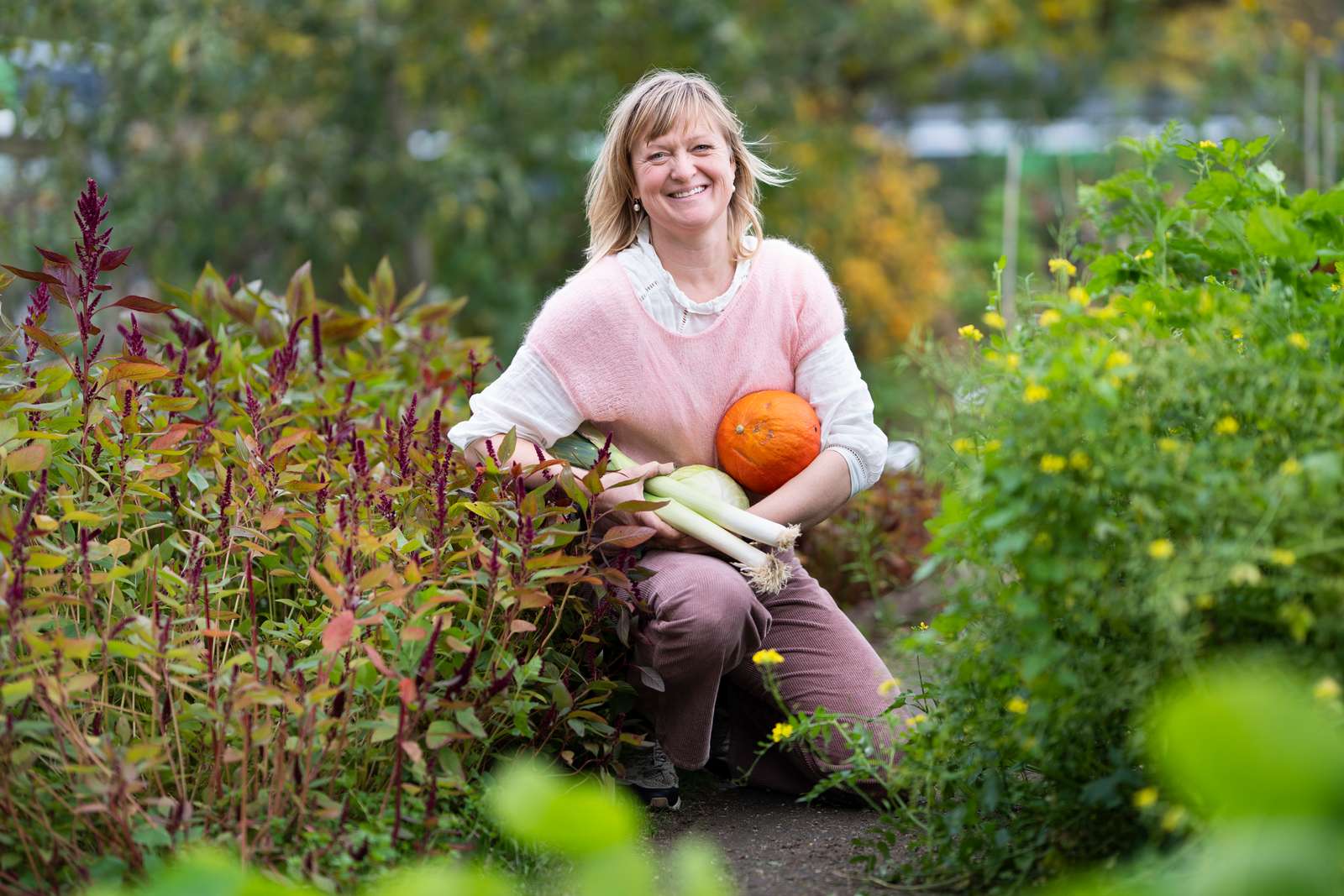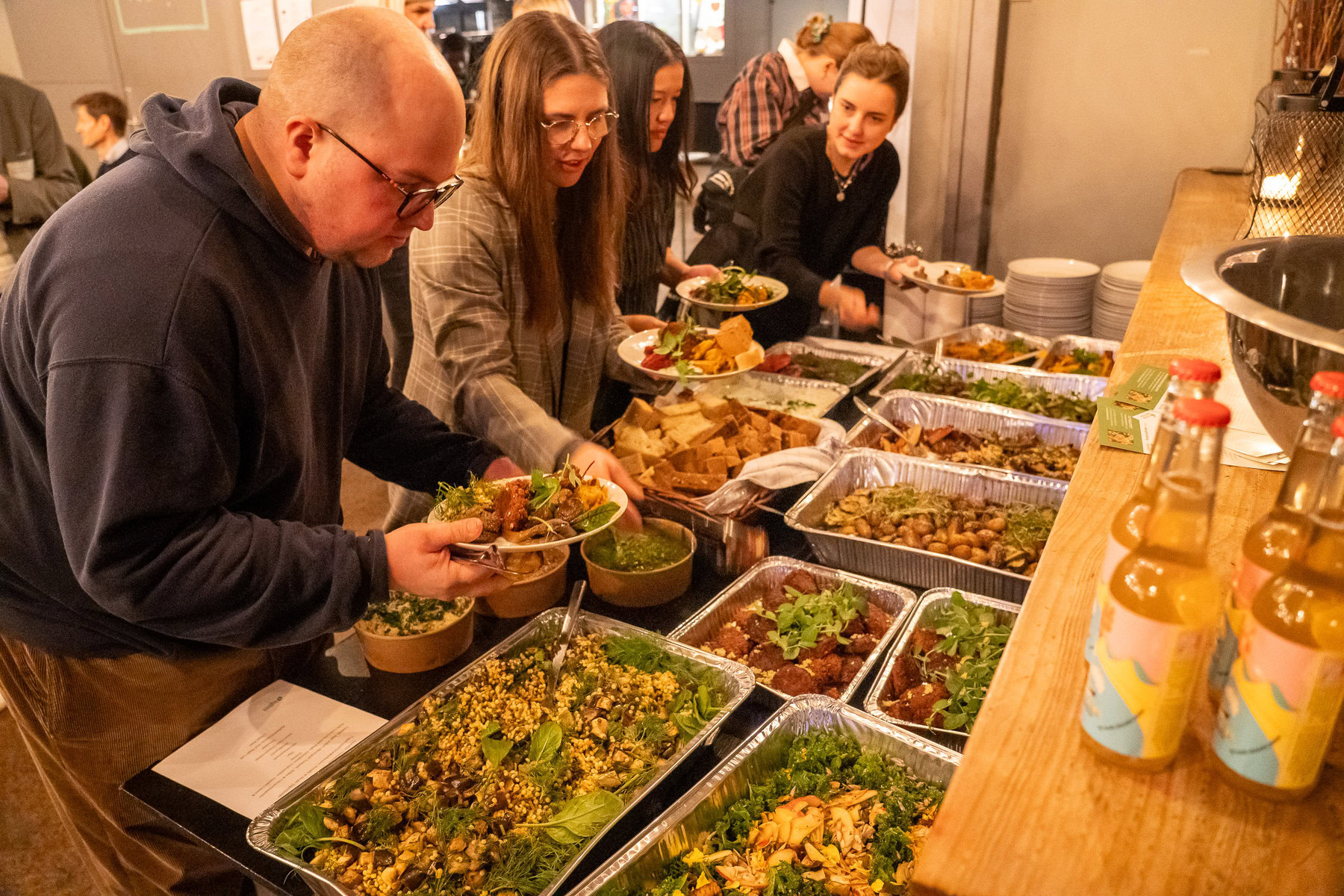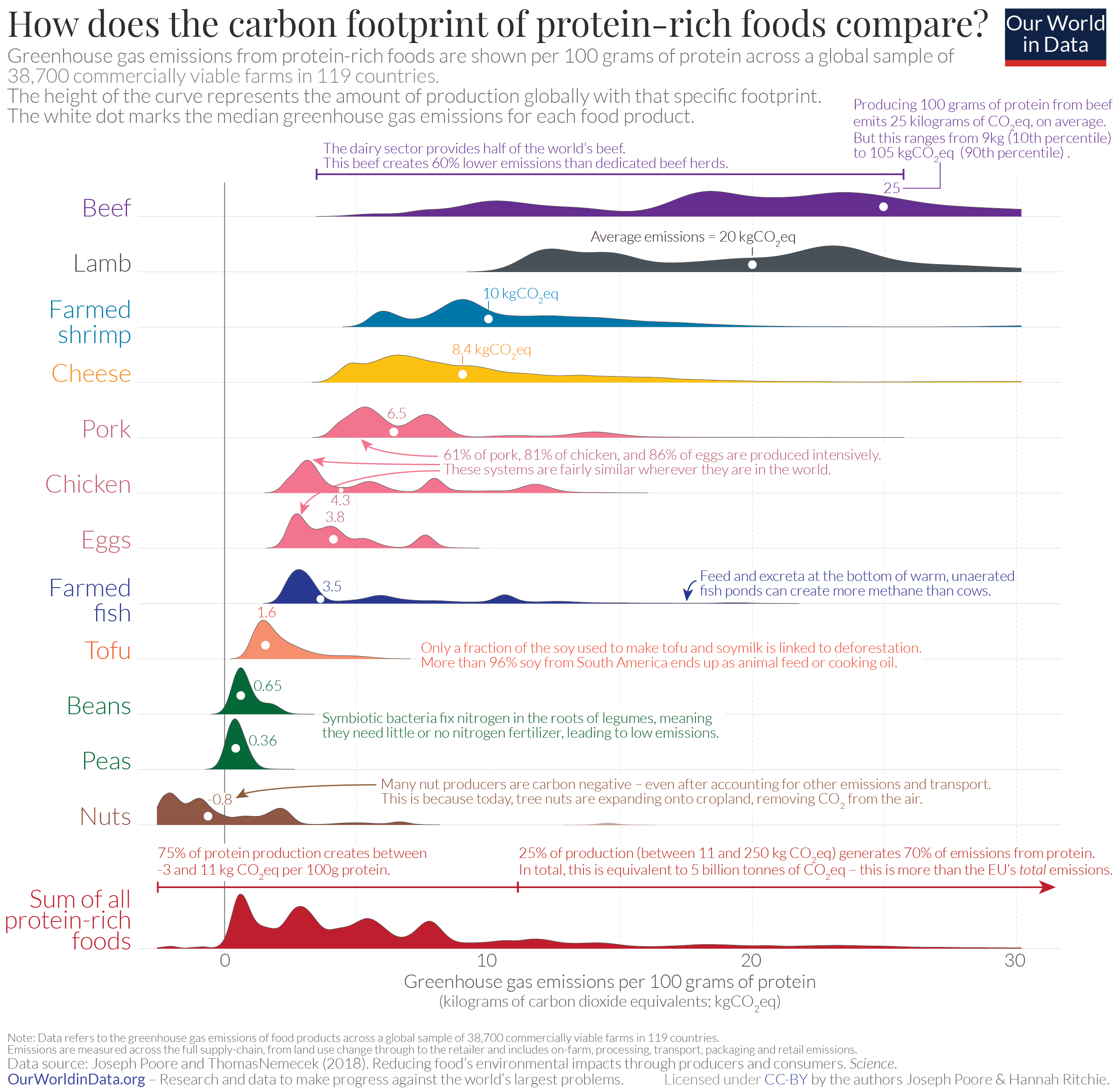Trine Krebs is sometimes called “the leek woman,” or even Miss Dry-Legume, of Denmark. The 48-year-old has for decades traveled around the country as, in her words, a “food inspirer,” proselytizing about all things vegetables.
“It’s very important to have locally grown food,” says Krebs, who has a 12-hectare farm replete with 50 different vegetables on the outskirts of Copenhagen. “It’s something that I’m concerned about; what is seen in our landscapes.”
So when, in October 2023, the Danish government published the world’s first ever national action plan for shifting towards plant-based diets, Krebs was ecstatic. Finally, everyone else was catching up with her.

Under the radical policy, a new action plan will be published every year focusing on the most pressing priorities in combination with an overarching, multi-year strategy including government spending for what’s known as the Plant-Based Food Grant, in an effort to make the nation’s food systems more sustainable for the planet.
“Plant-based foods are the future,” announced Jacob Jensen, Denmark’s Minister for Food, Agriculture and Fisheries, at the time. “If we want to reduce the climate footprint within the agricultural sector, then we all have to eat more plant-based foods.”
Concretely, the Danish government has three main goals: to increase demand for plant-based foods, to develop supply for plant-based foods, and to improve how all the different stakeholders — from scientists to farmers and chefs, food sociologists, and nutrition experts — in this nascent domestic industry are working together.
The efforts to drum up demand focus on boosting plant-based food consumption in public and private restaurants, canteens and food services (public kitchens serve up to 650,000 meals to Danish people a day); the private consumption of plant-based foods by Danish people; and consumption in foreign export markets such as the UK. The supply efforts focus on raising the quantity, quality and variety of Denmark’s plant-based food production, with research and development set to play a huge role.
Plant-based foods, according to the strategy, include everything from root vegetables to buds, stems, flowers, fruits and seeds as well as fungi, yeasts, seaweed and algae. A market projection in 2022 by researchers at the University of Copenhagen found that there are 15 plant-based protein crops, such as peas and almonds, suitable for cultivation in Denmark.
Danish authorities see reducing meat and dairy consumption as key to reaching the Nordic state’s goal of cutting carbon emissions by 70 percent before 2030, when compared to 1990. The climate think tank Concito estimates that more than half of Denmark’s land is used for farming and that agriculture accounts for about a third of its carbon emissions. The UN’s Food and Agricultural Organization estimates that meat and dairy account for about 14.5 percent of global greenhouse gas emissions.
Yet a major study published in 2021 found that the emissions made by producing plant-based foods are roughly half the amount incurred by meat production — which advocates say underlines the massive cuts that can be achieved by adapting diets.
“At the beginning, I wasn’t so much focused on agriculture, but when you look at the emissions and our land use for farming, you understand it’s a huge deal,” says Ida Auken, a member of parliament for Denmark’s Social Democrats party who, as the country’s former environment minister, was at the forefront of the policy. “Danes have to change the way that we eat.”
Denmark believes, however, that the necessary shift toward plant-based eating also offers a massive economic opportunity. AgriFoodTure, a research and innovation partnership of Danish universities, companies and other organizations, estimates that if the country were to gain a three percent share of the global plant-based food market, it could create up to 27,000 jobs and bring in 13.5 billion Danish kroner, or DKK ($1.9 billion).
“Building a strong domestic market for plant-based foods will reduce the climate footprint of the Danish people, but will also help to put Danish companies in a stronger position on export markets,” the government strategy notes.
Weighed down by negative news?
Our smart, bright, weekly newsletter is the uplift you’ve been looking for.And according to research by the University of Copenhagen, if Danes ate according to climate-friendly guidelines, it would prevent 1,000 deaths a year, cut the country’s emissions by 31 to 45 percent and save DKK 12 billion ($1.7 billion) in health costs.
The publication of Denmark’s national action plan follows the 2021 investment of DKK 1.25 billion ($182 million) to advance plant-based foods, most of which went into the fund.
The first tranche of funding, which totalled DKK 58.2 million ($8.47 million) for 36 projects, was granted last November and spans proposals to develop plant proteins, to train chefs in plant-based cuisine and for national information campaigns.
For example, the start-up PlanetDairy is working on plant-based versions of natural yogurt and Danbo, a popular cow’s milk cheese from Denmark, through “precision fermentation” to produce “milk” proteins made out of peas and broad beans (fava beans).
Others are looking to boost nut, oat and barley production; to research the “culinary potential” of mushrooms (which have the unique umami flavor); and to improve seaweed cultivation both on and off-shore — as well as creating new sustainable preservation methods such as a seaweed-based pesto.
Meanwhile, practical initiatives that were funded include a new vegetarian degree program at Denmark’s hospitality school, a “knowledge center” about plant-based cooking for chefs and students and a “vegan travel team” — proposed by Krebs — to train chefs around the country who are usually schooled in traditional, French-style methods despite the fame of Noma (the country’s celebrated, best-in-the-world restaurant known for its innovative use of foraged local ingredients).
“I’m very happy about it,” says Krebs, who works for the Food Organisation of Denmark, which helps restaurants to become more sustainable. Her travel team project will begin after the summer, prioritizing chefs in touristic coastal areas, which tend to lack vegetarian options, but she’s already started live-streaming cooking sessions from public kitchens that have made plant-based strides forward.
The second round, which is offering a much higher funding total of DKK 122 million, received 101 applications corresponding to grants of DKK 334 million, reflecting the significant interest in the project. The winners will be announced in August.
Rune-Christoffer Dragsdahl, secretary-general of the Vegetarian Society of Denmark, who helped draft the plan, says that it was put together in a “very holistic” way.
“It supports everything from farm to fork,” he adds. “Some of the most promising stuff is to educate professionals, because if you put too much burden on the individual, it’s too optimistic. We do need product solutions, too.”
Yet the cultural barriers in Denmark, which is one of the largest producers of pork in the world, pose a complex dilemma. A survey in 2019 found that although about 11.5 percent of Danes intended to reduce their meat consumption, and 27.5 percent had already done so, 57 percent had no intention to reduce their meat intake at all.
And while the Danish government updated its official dietary guidelines in 2021, recommending that adults eat just 350 grams of meat a week — the equivalent of about three hamburgers — the current level of meat consumption is about triple that.

That’s why the “nudge” approach of using better branding for plant-based foods as well as developing “hybrid” options — for example, substituting some of the pork in sausages with beetroot — are part of the plans.
“We still eat far too much meat,” says Dragsdahl. “But we can’t just force people against their will.”
The risks of failing to secure buy-in from the farming industry are also stark. In the Netherlands, an effort in 2019 to crack down on emissions by buying out livestock farms led to huge, tractor-led protests. In November 2023, Italy’s government banned laboratory-grown meat in a move the agriculture minister framed as “safeguarding our food, our system of nutrition … that we have enjoyed for millennia.” In recent months, France, Spain, Belgium and Bulgaria have been hit by farmer-led protests.
Denmark’s efforts to get farmers on board are complicated by the prospect of a looming carbon tax on agriculture. In February 2024, an expert committee commissioned by the Danish government presented the Green Tax Report, which includes policy proposals such as a farming emissions tax of DKK 750 ($109) per metric ton emitted.
Denmark has therefore approached the topic carefully, according to Auken, and has opted to focus on spurring demand for the new sector and the economic benefits it will bring rather than cracking down on the meat-based agricultural sector.
“We can’t repeat what was done to the coal miners,” she says of Denmark’s powerful meat industry. “We don’t want to turn this into a fight between pro- and anti-meat.”
Instead, Auken argues workers in agriculture should be retrained in the same way that Denmark’s offshore oil and gas workforce successfully transitioned into the offshore wind sector, which is now a multibillion-dollar export industry.
“There’s a need for those skills,” she says. “The workers are not obsolete.”
The strategy has been developed in close collaboration with Denmark’s largest farmers association as well as the large organic farming industry, which is seen as having a close synergy with the plant-based food sector.
“I’m talking a lot to union leaders,” says Auken. “I’m showing them some of those market opportunities.”
While it is still too early to quantify the impact of Danish diets, Acacia Smith, senior policy manager at the Good Food Institute Europe, a think tank, said in an email that Denmark has set an “important precedent” by publishing the action plan.
“Europe is the world’s biggest market for plant-based meat, and to take advantage of this growing industry — as well as to boost food security and create future-proof green jobs — other national governments should follow,” she added.
Other nations are indeed following Denmark’s plant-based path. In January, South Korea announced a KRW 63.9 billion ($47 million) food-tech budget for 2024 to develop plant-based substitute foods, food robots and food upcycling. The German government has allocated €38 million ($41 million) in the 2024 budget for the promotion of plant-based, precision-fermented and cell-cultivated proteins. And Portugal’s Vegetarian Association created a National Plan for plant-based proteins.
But despite the positive signs, Dragsdahl is concerned by the lack of accountability in Denmark’s plans: He had argued for the inclusion of targets like investment into research and development, hectares of land cultivated using legumes and public procurement. “It was a disappointment for us, the lack of concrete targets,” he says.
In turn, to really succeed in getting meat off the menu, Auken says that wider reform of the European Union’s agricultural policy is needed. “We’ve had some successes, but it’s still very, very early,” she says. “This isn’t a wheel we can turn on our own.”
But Krebs is enthusiastic about Denmark’s progress towards a plant-based future. “If we can make vegetables sexy and tasty, we can also economize,” she says. “What’s been done already is incredible.”













